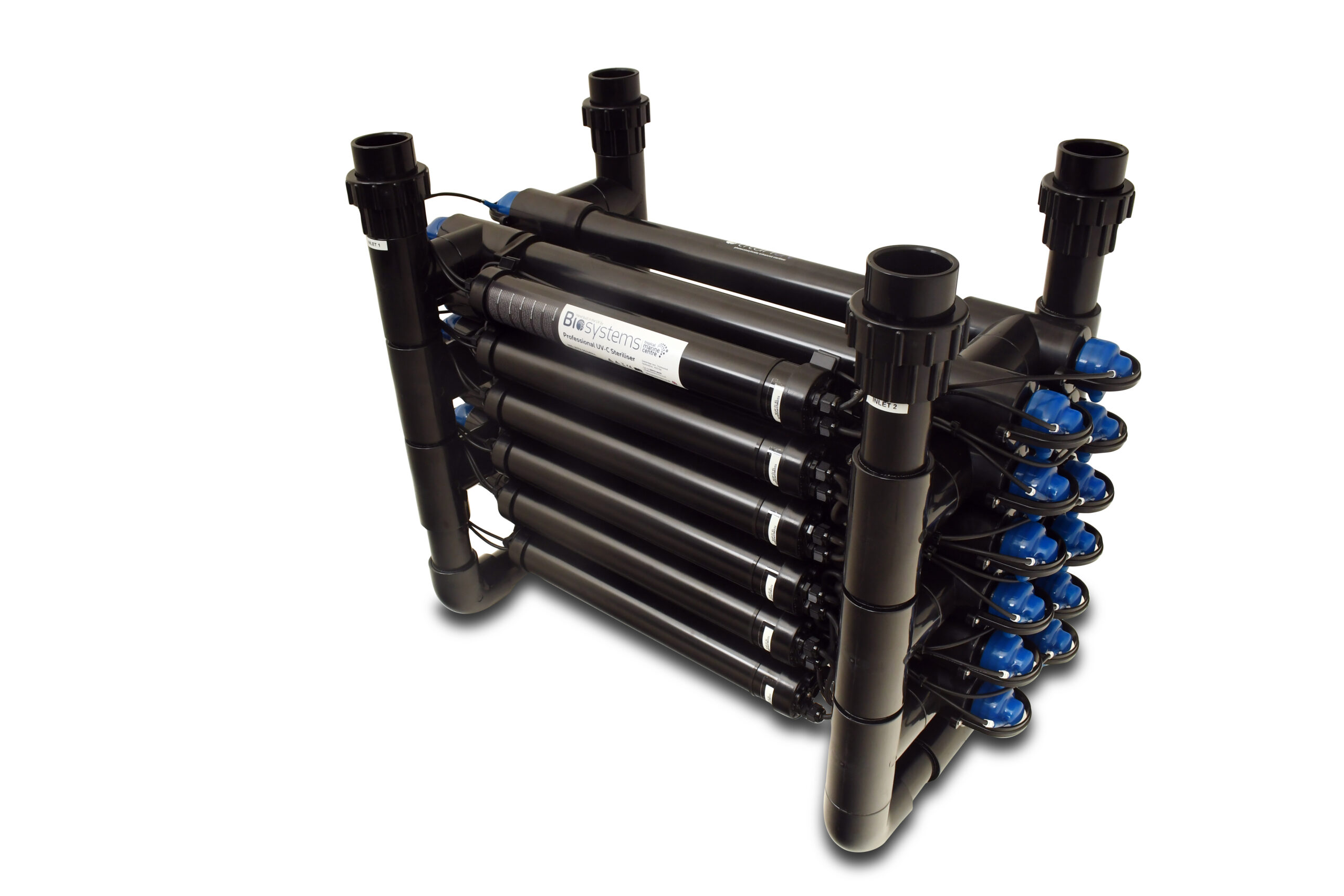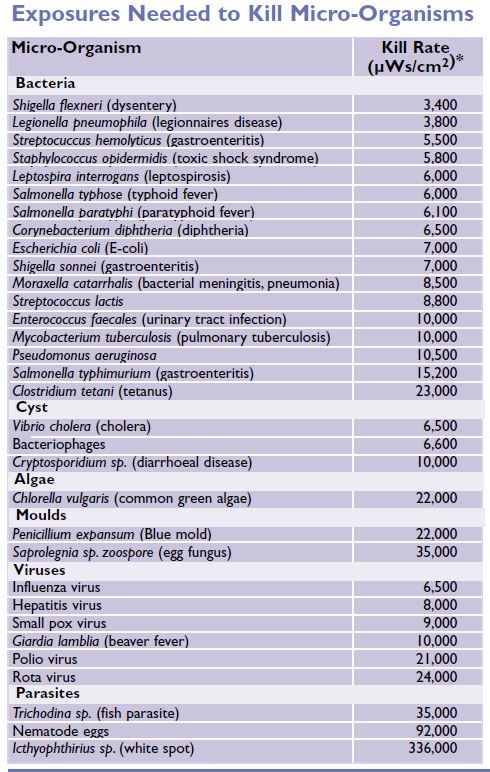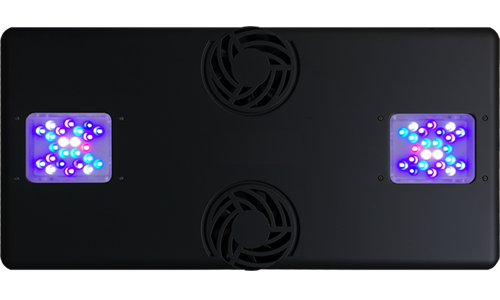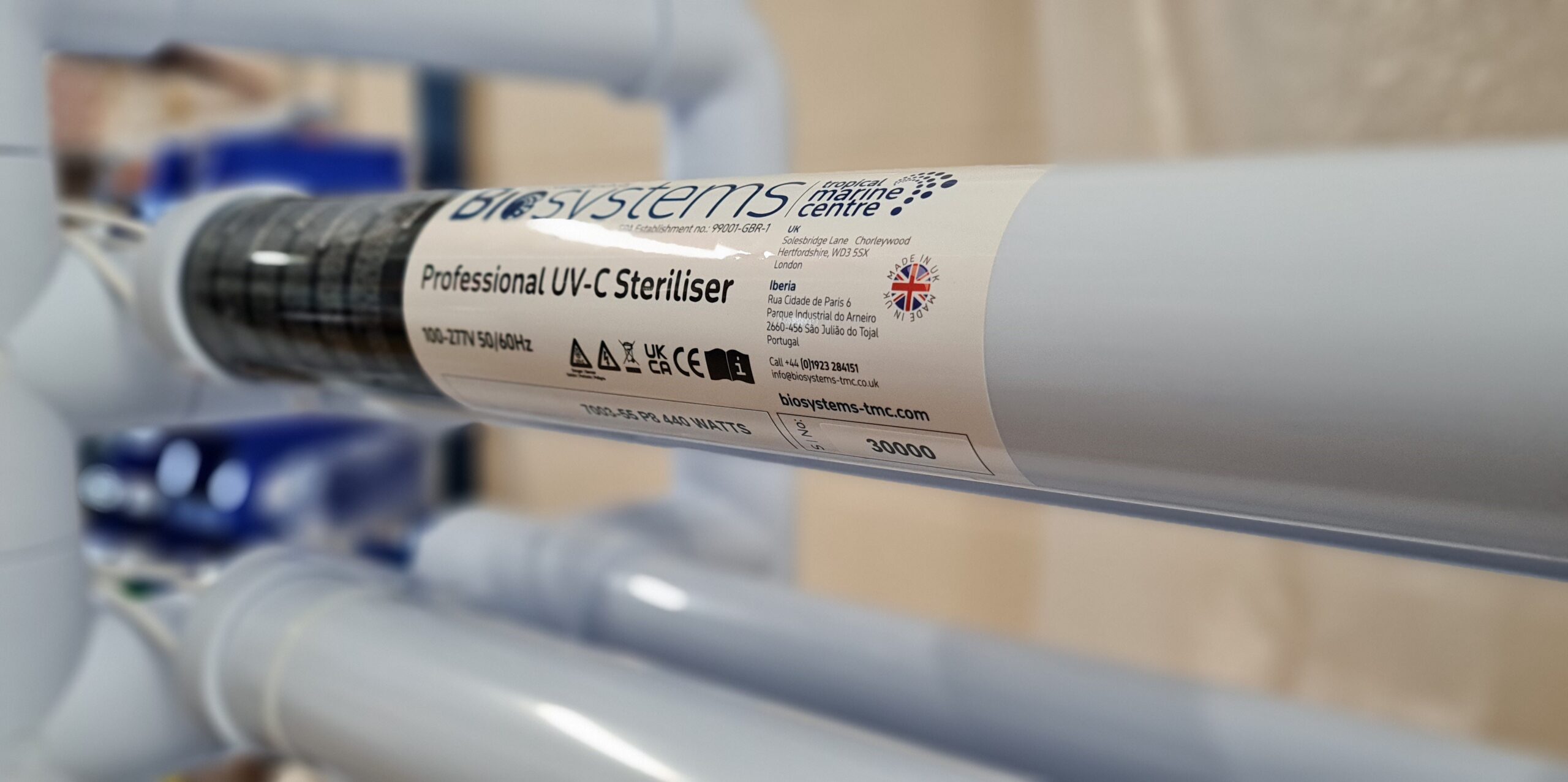With so many anecdotes and half-truths about what UV can and can’t do for our aquariums, we got in touch with a guy who designs and builds commercial UV sterilizers for a living. Michael Barrett is Head of Technical Development at Tropical Marine Centre and knows a thing or two about UV light.
Do you have any qualifications/experience in lighting?
I graduated from university with a Batchelors in Electronics with Computer Science. My final dissertation was based on light therapy – specifically the use of intense light to treat certain skin conditions. From that point, I was bitten by the bug – with my main interest being the biology of light (i.e. how it interacts with organisms). From there I became the Technical Manager of a lighting component company that supplied TMC with the parts for their sterilizers. In that role, I helped them to make the move from magnetic to electronic ballasts which improved efficiency across the range. A couple of years later I joined TMC to spearhead the development of the first economically viable LED light for aquaria, which later became known as AquaRay. Throughout I have continued my education in lighting through experience and discussion with the many businesses and institutions that we supply, as well as a handful of specialist courses and seminars. Now here I am 16 years later as the Head of Technical Development, working to ensure that we are ahead of the curve on quality whilst continuing to supply product that keeps the hobby affordable and accessible.

What’s the difference between a UV clarifier and a UV sterilizer?
This is an important distinction. A clarifier is targeted at controlling and reducing waterborne algae, which keeps the water clean and clear for viewing purposes. It is generally designed to provide a lower average dose rate of UV-c and is usually more for ponds than aquaria. A sterilizer gives higher dose rates and is targeted not only at the algae, but also pathogens such as bacteria, viruses, fungi, and even some parasites. The all-important concept in UV treatment is ‘contact time’. This is simply the time that the water is in contact with the UV-c and so it dictates the dose rate. It can be broken down into three variables:
- Flow rate – we all know that we need a relatively high flow in our aquariums. The faster the water is flowing, the less time it will be in contact with the UV-c, and so the dose rate will be lower.
- Size of reactor chamber – UV-c is absorbed fairly quickly by water, so the water being treated needs to be held relatively close to the lamp to ensure contact. This means that a larger reactor chamber will have a lower average dose rate.
- Length of lamp arc – the lamp arc is the source of the UV-c light, and the longer that is, the longer the water will be in contact with the UV-c. The contact time can also be affected by the path of water flowing around that lamp.
Does bulb shape/style matter?
The arc length will have an effect and the shape may affect the contact time too. This will also have a bearing on the efficiency of the unit. At TMC we use fairly tightly-chambered long lamps which means that the water flows closely across the whole length of the lamp, so you can be certain of the contact time based on flow and lamp length. There are however other designs out there with larger chambers that rely on flow slowing through that chamber, or with single-ended lamps that attempt to swirl the water around the lamp for a longer period. In theory, this improves contact time but it is harder to be sure of.
In UV does wattage matter i.e the more power the greater the kill rate?
Yes, it does. The power of UV light emitted is a direct contributor to the kill rate, along with the contact time. Generally speaking the more power, the more UV-c is available, however, we are talking about the power of UV-c specifically, which is the portion of light around 250-280nm emitted by the lamps that’s effective at killing microorganisms. This is not necessarily a direct relationship with the overall power of the lamp. So it may be possible to have a more power-hungry lamp that emits less UV-c. I would always advise buying a trusted brand to ensure efficiency.
In UV we talk about kill rates. What does that mean?
Kill rates equate to the lethal dose rate of UV-c for a certain species. This is usually stated in the amount of power applied in a second over a square centimeter area (µWs/cm2).

Everyone installs UVs on reef tanks primarily to kill Ich/Whitespot. Why does flow rate matter, and can any UV really kill Whitespot?
I get asked this question all the time! You can see from the chart that ich has a massively high kill rate compared to other pathogens. As we touched on earlier, reducing the flow rate can increase the dose and so people tend to lean towards this when targeting Ich. This theory is well founded, but the reality is that you’re unlikely to hit the dose rates needed to kill Whitespot. It is further compounded by the fact that the UV sterilizer can only kill organisms that pass through the reaction chamber, so the parasites can still remain on the fish and in other areas of the system. The better way to approach this is to see the UV as a control. It may not kill the Ich passing through, but it will deactivate those organisms meaning that the population is controlled and will wane over time. When paired with good husbandry and maintenance, the appearance of Ich can be eradicated in this way.
If you run a UV sterilizer on a bypass can it still be effective?
A UV can be run on a bypass, but the danger is that you create a semi-closed loop and you end up not treating all of your water. Ideally, your UV should be placed on the return – this ensures that water flowing back into your display is as clean as it can be and that the entire water volume is passing through the sterilizer.
What are the biggest mistakes people make when selecting an aquarium UV?
Definitely understanding the required flow rates is a problem. Slow flow may make for higher kill rates, but there are two major elements you need to balance that against to hit the right flow rate for your system:
- If running on your return, you want to ensure enough flow for your mechanical and biological filtration among other things.
- Some bacteria reproduce scarily quickly, doubling their numbers every 15-20 minutes! This means that ideally, you want to put your entire volume of water through your UV at least 3-4 times an hour to stay on top of that.
This means that our usual recommendation is to stick to turning over the entire system volume a minimum of 3-4 times an hour. If you really do require higher kill rates at that flow, then you should up your power. On a normal system you can be safe in the knowledge that at our recommended volumes and flow rates, your UV will still be working to control those other more complex pathogens such as Ich.
The other common mistake is the expectation that the water will be completely sterile and that UV is the cure to all problems (algae/parasites/bacterial blooms etc). This is just not the case. UV forms part of a well-maintained system by staying on top of potential infestations or bacterial blooms. It only treats what passes through the reaction chamber, but by doing so it helps to maintain a healthy environment for both the fish/reef keeper and the livestock alike.

What’s the difference/benefit between a quartz sleeve and a glass sleeve?
Quartz glass is often used for UV sterilizers and clarifiers both in the sleeve that separates the lamps from the water and the lamps themselves. This is because it has a high rate of transmittance of UV-c, meaning that more of the UV-c will get to the water to do its job. There are alternative specialist glass materials out there, which are significantly cheaper, but the quality of transmittance is not guaranteed. If buying glass lamps or sleeves I would check with the manufacturer. At TMC we use quartz sleeves. Our lamps are in fact glass; however we have carefully selected the glass used to have a sustained transmittance of over 90%, so you are getting good performance for a fraction of the price of a quartz equivalent.
Is it okay to touch the bulb when installing it?
When using high-pressure UV-c lamps (these ones tend to look like the metal halide bulbs of old), you most definitely should not touch the bulb. Dirt and grease from fingers can create hot spots when in operation and cause the lamp to explode. With the low-pressure lamps that we generally use in the hobby, it is less of an issue; however any contaminants will still potentially reduce the lamp life and transmittance, so it is good practice to wear some gloves when handling the glass parts.
If I dose liquid beneficial bacteria, will UV kill it?
In short, yes; however only if it passes through the UV. The beneficial bacteria that you want in your aquarium generally colonize areas that will never see your UV sterilizer – places like sand beds, rock work, and filtration media. My advice would be to turn your UV off for an hour or so after dosing to allow the bacteria to settle and start to colonize said areas. Don’t forget to turn it back on though!!
What’s new in UV? Are there any improvements to fluorescent bulb units?
UV technology has been the same for many years now – in the early 2000s there was a switch to electronic ballasts (the gear that runs the lamp), which made things more efficient; however, until recently things have stayed much the same. In the past 4 years, TMC has introduced its Titan range of sterilizers which adds the use of a photocatalytic lining to the reaction chamber. This lining interacts with the UV-c light to produce a perfectly safe and contained oxidizing effect in the water. This increases the effectiveness of the UV by a significant amount (around 30%) and has the further benefit of attacking and removing pollutants such as phenols, improving water clarity. Over the last year I have also been spending a lot of time in our dedicated research lab working on some improved lamp technology, so watch this space!!
We’ve been talking about it for a long time but LED UV sterilizers still allude to us. Do you think we will ever see LED UV sterilizers in the short/long term?
I’d like to think so and it is certainly something I have my eye on. There are LED sterilizers out there, but they are not yet suitable for the hobby’s needs; being either low power for almost non-existent flow rates or hugely expensive with a short lifespan. There is a ton of research happening in this area though, so unless that hits a brick wall, I would hope to see a more workable solution within the next 5 years. There are lots of design considerations (think power vs contact time), but we do like a challenge! Apart from the obvious benefit of a massive leap in energy efficiency, there should be the potential to apply sterilization to our aquariums in a completely new way.

We talk about Violet and Ultra Violet diodes in reef aquarium lighting. Is it true UV and if so can it damage our eyes?
Ultraviolet light ranges from wavelengths of 100 to 400nm. It is split into three classifications within that – UV-c (100-280nm), UV-b (280-315nm), and UV-a (315-400nm). The wavelength can be equated to energy – the shorter the wavelength, the higher the energy and so (broadly speaking) the more damage it can cause. The violet and ultraviolet LEDs used in reef lighting don’t go below around 390nm but are usually in the 400-420nm range. This is safe for human skin and is OK for eyes as long as they aren’t viewed directly because LEDs are a very intense source of light. When used normally, the light is too dispersed to cause any damage, but it should be noted that even blue LEDs can damage eyes if viewed directly. The human eye is not so sensitive to blue and violet light, and can’t see ultraviolet light at all, so with these wavelengths, it is possible to look at a very powerful energy source without having the need to blink or look away. For this reason, intense blue and violet LED sources that aren’t mixed alongside other colors should always have warning labels to advise against direct viewing.




